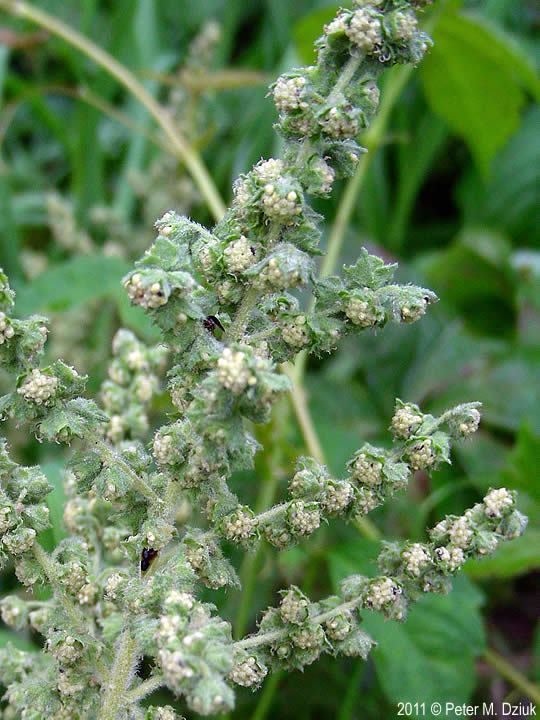Kingdom Plantae Species I. xanthiifolia Rank Genus | Order Asterales Higher classification Daisy family | |
 | ||
Similar Daisy family, Schkuhria, Stylocline | ||
Iva xanthiifolia, synonym Cyclachaena xanthiifolia, known as giant sumpweed or, in Britain and Ireland, marsh-elder, is a North American plant species in the sunflower family. It is believed to be native to the Great Plains but now found across much of southern Canada and the contiguous United States, though rarely in the Southeast. It has been introduced and semi-naturalized in central and southern Britain, partly via seeds bought for bird food.
Contents
It is an annual herb roughly 1–3 meters (40-120 inches or 1¼-4 feet) tall with stout, erect, branched stems. The stems are erect or ascending, finely ridged or grooved, and grayish-green. They are usually unbranched but sometimes have straight, upright branches. They are hairless near the base and are sparsely to moderately covered with fine curved or curled hairs above the base.
Morphology
Individuals of this species are herbaceous. The leaf pattern is opposite with a possibility for alternate towards the top of the plant. The leaves are long stalked and double toothed with rough hairs on the top, and light green and fuzzy on the bottom. Lower leaves are long-stalked, the stalks up to 2¾ inches (69 mm) long or longer. Upper leaves are short-stalked, the stalks up to ⅜ inch (9 mm) long or longer. The flowers are in green to white in panicled spikes roughly 10 inches (25 cm) long. Some flowers are pistillate and fertile while others are perfect but sterile. The flowers bloom from August–October. The individual flower heads droop at the end of a 3 ⁄16 to ¼ inches (5-6.3 mm) long or longer stalk. The whorl of bracts at the base of the flower head (involucre) is 1 ⁄16 to ⅛ inch (1.6-3.2 mm) long. The disk is composed of 8 to 20, usually no more than 10, male (staminate) florets in the center and usually 5 female (pistillate) florets around the margin. The flowers bloom from August–October. The staminate florets have stamens with the filaments fused into a tube and the anthers free but closely arranged in a ring. The corolla is about 1 ⁄16 inch (1.6 mm) long and white to pale yellow. The pistillate florets have stamens with the filaments into a tube and the anthers free but closely arranged in a ring. The corolla is sometimes absent. When present it is about 1 ⁄64 inch (0.4 mm) long and whitish.
The fruit is an egg-shaped achene, dark brown to nearly black, 1 ⁄16 to ⅛ inch (1.6-3.2 mm) long, with a tuft of hairs attached to one end.
Habitat and ecology
Iva xanthiifolia grows in moist areas or previously disturbed sites. It can also be found in fields or along roadsides and streams.
Effects
Iva xanthiifolia, if consumed by cows, can make the milk that is produced taste bitter. The leaves can cause dermatitis in some individuals. The pollen of this plant can cause autumn hay fever in some individuals.
